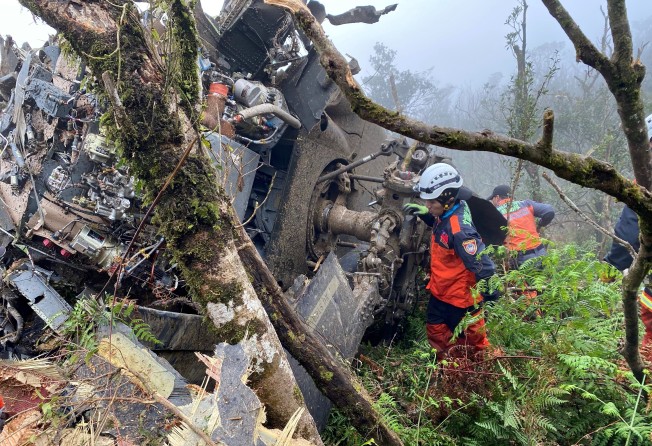
Taiwan counts 15 lives lost in 2020 and rising military cost amid escalating tension with China
- Black Hawk helicopter crash which claimed high-profile Taiwan officer was the first of five fatal military incidents
- By November Taiwan’s navy had sent 1,223 ships to meet challenges by Chinese naval vessels, an increase of nearly 50 per cent on last year

The Taiwanese military suffered big losses in both personnel and morale in 2020, with some observers linking it to pressure from mainland China.
A total of 15 people were killed in five accidents during routine exercises – the highest number since Tsai Ing-wen was elected president in 2016.
Among them was Taiwan’s chief of the general staff Shen Yi-ming, who was one of eight people who died when a Black Hawk helicopter crashed in early January.

In previous years, Taiwan’s military has had only a few incidents, such as the failed launch of a missile in July 2016 and a collision between its military and a civil ship in March 2017.
Taiwan’s greater personnel loss this year coincides with an increase in its military activities, prompted by muscle-flexing operations from the Chinese mainland which has sent warplanes almost daily to Taiwan’s air defence identification zone (ADIZ) since late September and has conducted countless drills in or near the Taiwan Strait.
Andrew Yang, former Taiwanese defence minister, said mainland military exercises regarding Taiwan might have led to these preventable losses.
“We need to increase our activities to counter pressure from the mainland and all these are additional operations. What’s more, all training and exercises have risks. It would lead to more casualties,” Yang said.
According to Taiwan’s defence ministry, Chinese military planes – such as the Xian H-6 bomber, J-16 fighters and Shaanxi Y-8 transport aircraft – had entered Taiwan’s ADIZ on 63 days. And on September 19, China flew 21 warplanes close to Taiwan’s airspace to intimidate, according to the Taiwan defence ministry, the strongest single “patrol” China has made.
A mainland Chinese military magazine released a video outlining a potential attack by the mainland on Taiwan’s defence systems in May.
Chinese military operations have strained the island’s small 290,000-strong military, both in the air and at sea.
“The island’s air force made 20 per cent more flight hours and sorties than last year to confront the provocation from Chinese warplanes,” said Taiwan’s defence minister Yen Te-fa in September when visiting an airbase in Taichung.
By early November, Taiwan’s navy had sent 1,223 ships to meet challenges by Chinese naval vessels, a 46.9 per cent increase, or an increase of 406 ships, when compared to the same period last year, said Taiwan’s navy chief of staff lieutenant General Ao I-chih when being questioned by Taiwan’s legislators in early November.
However, Alexander Huang Chieh-cheng, a professor of international relations and strategic studies at Taipei’s Tamkang University, said Taiwan’s military accidents were not a direct result of military pressure from Beijing, but more because of equipment mishandling or unexpected circumstances.
Beijing views Taiwan as a breakaway province waiting to be unified, by force if necessary.
China suspended all official communications with Taiwan after Tsai became the island’s president because she refused to recognise the “1992 consensus”, a tacit agreement between Beijing and Taipei on how to define China.
Charlie Lyons Jones, a researcher in the Australian Strategic Policy Institute’s Defence and Strategy Programme, said China had proven adept at deploying tactics that sat just below the threshold of armed conflict to “exploit a temporal advantage and secure a fait accompli”.
“The frequent dispatchment of military aircraft to cross the median line of the Taiwan Strait is one example of this phenomenon. This practice has eroded a norm of relations with Taiwan … to the point at which that norm no longer has any strategic value … Beijing has thus achieved an important strategic goal without having fired a single shot,” Lyons Jones said.
Lyons Jones said Beijing’s intent was not to start an armed conflict against Taiwan because doing so would likely drag in the US military, a force which remained capable of levelling significant costs against the PLA during a war.
Derek Grossman, a security expert specialising in Taiwan affairs from US think tank Rand, said mainland China’s activities were more like an incremental erosion of accepted norms in the strait, akin to “salami-slicing” tactics to change the status quo.
“China is flexing traditional military muscle to pressure Taiwan into changing its decision-making in Beijing’s favour … That is precisely the uncertain mindset Beijing wants potential adversaries to have before actual armed conflict,” Grossman said.